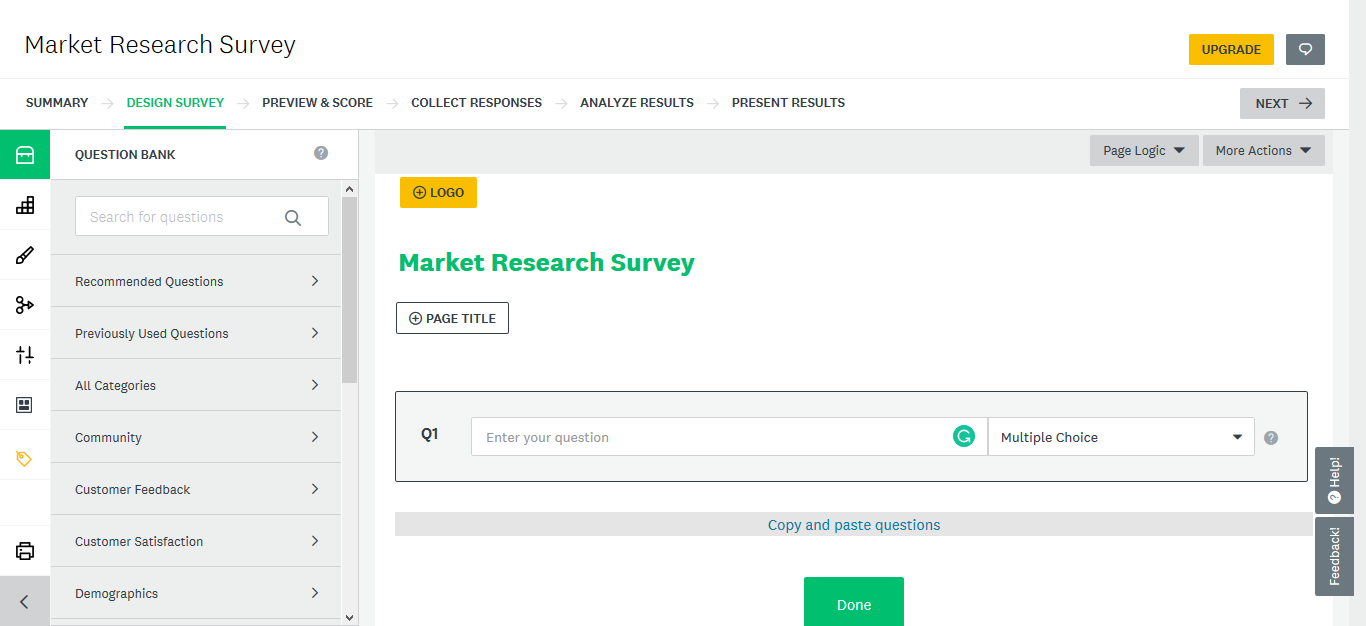

SurveyMonkey has over 150 templates, but most of them require a paid plan.
#Surveymonkey webook free
Templates: All 17 templates in Google Forms are free to use.
#Surveymonkey webook upgrade
SurveyMonkey requires an upgrade for this.

Google Forms allows you to change the font and size of your header text, questions, and any other text. In SurveyMonkey, these are both paid features.įonts. In Google Forms, you can upload any picture you want as a header, including your company logo, and change the background of your form to any color. SurveyMonkey does have a free Basic plan, but it's pretty limited, especially compared to everything you get at no cost with Google Forms: Google Forms is totally free to useĪs long as you have a Google account, you can access Google Forms in its entirety-completely free. The Genius Assistant panel also helped me customize the survey-I could add departments, remove SurveyMonkey's branding, and change the appearance.Ĭreating a well-researched, unbiased survey is a lot of work-SurveyMonkey does most of the heavy lifting for you. Within seconds of clicking "Submit," I had a complete, intelligible 9-question survey that was good enough to send off. To test it out, I chose the Employee Satisfaction template. All you have to do is tell SurveyMonkey who you want to survey and what your goal is, choose a survey template, give them the name of your company, and upload your logo. SurveyMonkey has a "Build it for me" feature that allows you to choose the type of survey you want to create.

Other than the 17 templates, there's no other support for you: no recommended questions, no question banks, nothing. The main difference here: you have to do everything from scratch in Google Forms. Of course, you'll have to pay a premium for these features-I'll touch on that in a bit-but it'll be worth it if you want to create robust and authoritative surveys. You'll need to explore and tinker, but you'll find any feature you could possibly want. SurveyMonkey, on the other hand, has so much bubbling underneath the surface. SurveyMonkey supports you more as you create your surveysįor the most part, with Google Forms, what you see is what you get. It's a simple tool with basic features-but it absolutely gets the job done. So why did I just walk you through the entire process of creating a form in Google Forms? Because that's literally all there is to it. Zapier is a no-code automation tool that lets you connect your apps into automated workflows, so that every person and every business can move forward at growth speed. If you decide to create a form from scratch, you can choose from 11 different question types, including form-specific options for date, time, and even file upload, which could be useful for IT ticket systems or the like. The template options aren't robust, by any means, but depending on what you're collecting data for, there might be something that works. Once you're in the Google Forms dashboard, you can start a new form from scratch or choose from 17 basic templates. So if you already use Gmail, there are no extra steps for signing up, no new password, and no fishing for a confirmation email to solidify a new account. The only thing you need in order to use all of Google Forms' features is a Google account. ⭐⭐⭐ Very limited free plan not cheap but worth it for serious survey builders ⭐⭐⭐⭐⭐ Totally free to use all the features ⭐⭐⭐⭐⭐ Multiple ways to view, customize, and save your data ⭐⭐⭐ Simplistic analytics but useful enough for form data ⭐⭐ Basic customization for layout and design ⭐⭐⭐⭐ More features to sift through but still very intuitive ⭐⭐⭐⭐⭐ Incredibly simple to get started with and make the most of Here's a quick rundown of features-take a look, and then keep reading for a fuller rundown. It's a subtle difference (without a standard definition), but generally, forms collect specific data (think: purchase orders or event registrations), while surveys are meant to collect nuanced feedback or opinions.īut, of course, there's more to it than that. When it comes down to it, Google Forms is better suited for forms, and SurveyMonkey is better suited for surveys. SurveyMonkey has more features for advanced survey creation SurveyMonkey supports you more as you create your surveys Google Forms is easier to get started with After spending time in each app, setting up mock surveys and tinkering with features, here's what I found. But one thing I didn't expect: I severely underestimated their capabilities. When I went to test these survey apps to see how they stacked up, I knew they'd each have their pros and cons.


 0 kommentar(er)
0 kommentar(er)
